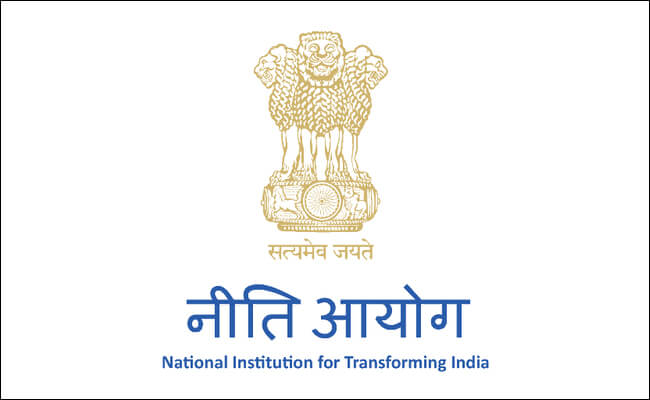
AI refers to the ability of machines to perform cognitive tasks like thinking, perceiving, learning, problem solving and decision making. Initially conceived as a technology that could mimic human intelligence, AI has evolved in ways that far exceed its original conception. With incredible advances made in data collection, processing and computation power, intelligent systems can now be deployed to take over a variety of tasks, enable connectivity and enhance productivity. As AI’s capabilities have dramatically expanded, so have its utility in a growing number of fields.
The truly transformative nature of the technology, yet the nascent stage of its adoption worldwide, provides India with an opportunity to define its own brand of AI leadership. #AIforAll - the brand proposed for India implies inclusive technology leadership, where the full potential of AI is realised in pursuance of the country’s unique needs and aspirations. The strategy should strive to leverage AI for economic growth, social development and inclusive growth, and finally as a “Garage” for emerging and developing economies.
While AI has the potential to provide large incremental value to a wide range of sectors, adoption till date has been driven primarily from a commercial perspective. Technology disruptions like AI are once-in-ageneration phenomenon, and hence large-scale adoption strategies, especially national strategies, need to strike a balance between narrow definitions of financial impact and the greater good. NITI Aayog has decided to focus on five sectors that are envisioned to benefit the most from AI in solving societal needs:
- Healthcare: increased access and affordability of quality healthcare,
- Agriculture: enhanced farmers’ income, increased farm productivity and reduction of wastage,
- Education: improved access and quality of education
- Smart Cities and Infrastructure: efficient and connectivity for the burgeoning urban population, and
- Smart Mobility and Transportation: smarter and safer modes of transportation and better traffic and congestion problems.
To truly reap the benefits of deploying AI at scale, the report identifies the following barriers that need to be addressed in order to achieve the goals of #AIforAll:
- Lack of broad based expertise in research and application of AI,
- Absence of enabling data ecosystems – access to intelligent data,
- High resource cost and low awareness for adoption of AI,
- Privacy and security, including a lack of formal regulations around anonymisation of data, and
- Absence of collaborative approach to adoption and application of AI.
Superior research capabilities have been the cornerstone of leadership aspirations in emerging technologies and effectively realising the growth potential requires expertise in both core and applied research. Despite indications of recent positive efforts in this aspect of technology, AI research in India is still in its infancy and requires large scale concerted and collaborative interventions.
The paper proposes a two-tiered structure to address India’s AI research aspirations:
- Centre of Research Excellence (CORE) focused on developing better understanding of existing core research and pushing technology frontiers through creation of new knowledge;
- International Centers of Transformational AI (ICTAI) with a mandate of developing and deploying application-based research. Private sector collaboration is envisioned to be a key aspect of ICTAIs.
The research capabilities are proposed to be complemented by an umbrella organisation responsible for providing direction to research efforts through analysis of socio-economic indicators, studying global advancements, and encouraging international collaboration. Pursuing “moonshot research projects” through specialised teams, development of a dedicated supranational agency to channel research in solving big, audacious problems of AI – “CERN for AI”, and developing common computing and other related infrastructure for AI are other key components research suggested.
As technology increasingly disrupts the nature of jobs and shifts the benchmarks of technological aptitude, skilling and reskilling of workforce forms an integral part of our approach to adopting AI. There is an emergent need for reskilling the existing workforce and developing future talent in accordance with the changing needs of the job market. This could be done via the adoption of decentralised teaching mechanisms working in collaboration with the private sector and educational institutions to prescribe certification with value. Furthermore, promotion of job creation in new areas, like data annotation needs to be identified and promoted, as these would have the potential of absorbing a large portion of the workforce that may find itself redundant due to increasing automation.
Adoption of AI across the value chain viz. startups, private sector, PSUs and government entities, will truly unlock the potential by creating a virtuous cycle of supply and demand. The barriers to AI development and deployment can effectively be addressed by adopting the marketplace model – one that enables market discovery of not only the price but also of different approaches that are best suited to achieve the desired results. A three-pronged, formal marketplace could be created focusing on data collection and aggregation, data annotation and deployable models. There could be a common platform called the National AI Marketplace (NAIM).
Furthermore, for accelerated adoption of a highly collaborative technology like AI, the government has to play the critical role of a catalyst in supporting partnerships, providing access to infrastructure, fostering innovation through research and creating the demand by seeking solutions for addressing various governmental needs.
As AI-based solutions permeate the way we live and do business, questions on ethics, privacy and security will also emerge. Most discussions on ethical considerations of AI are a derivation of the FAT framework (Fairness, Accountability and Transparency). A consortium of Ethics Councils at each Centre of Research Excellence can be set up and it would be expected that all COREs adhere to standard practice while developing AI technology and products.
Data is one of the primary drivers of AI solutions, and thus appropriate handling of data, ensuring privacy and security is of prime importance. Challenges include data usage without consent, risk of identification of individuals through data, data selection bias and the resulting discrimination of AI models, and asymmetry in data aggregation. The paper suggests establishing data protection frameworks and sectorial regulatory frameworks, and promotion of adoption of international standards.
In order for India to ride the AI innovation wave, a robust intellectual property framework is required. Despite a number of government initiatives in strengthening the IP regime, challenges remain, especially in respect of applying stringent and narrowly focused patent laws to AI applications – given the unique nature of AI solution development. The importance of data to development of useful models is one such example. To tackle these issues, establishment of IP facilitation centers to help bridge the gap between practitioners and AI developers, and adequate training of IP granting authorities, judiciary and tribunals is suggested.
The AI strategy is aimed at primarily guiding an inevitable wave of change for quicker and better impact. The AI ecosystem is rapidly evolving and taking societies into uncharted territory. For now, we can begin to ask some of the big questions that each society must answer for itself: are we ready to manage data ethically? How do we bridge the digital divide? Which innovations are worthy of public funds and partnerships? Bringing these questions into the open is the most important step in ensuring that AI advances create a better society.
There has been tremendous activity concerning AI policy in different countries over the past couple of years. Governments in USA, UK, France, Japan and China have released their policy and strategy papers relating to AI. In order to establish a leadership role, it is important for India to take the plunge and start by releasing a Strategy Paper to initiate the roll out of an ambitious programme that would ensure for India its rightful place in this transformational era.
India’s Approach to Leadership in AI: National Strategy for Artificial Intelligence

